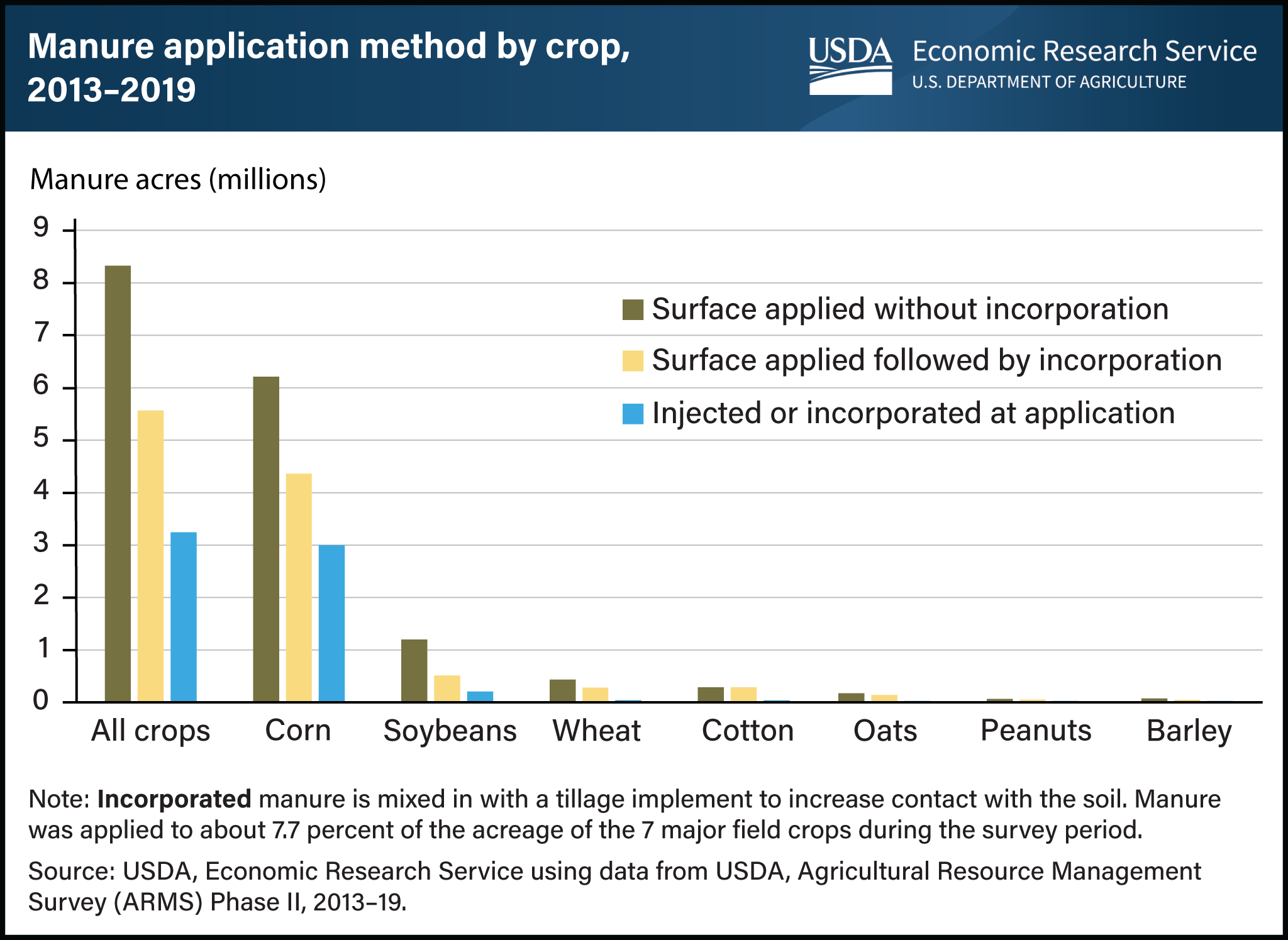Farmers spread most manure through surface applications
- by Nigel Key and Laura Dodson
- 7/3/2023

Between 2013 and 2019, the leading manure application method for farmers of major field crops was to apply manure to the surface without incorporating it—the simplest method in which manure is flailed or sprayed out of wagons and left on the ground. This method was used on 8.3 million acres, including about 6 million acres of corn. Surface application with incorporation was the next most common method, used on 5.5 million acres. With incorporation, manure is first spread on the soil surface and then mixed into the first few inches with a tillage implement, thus increasing its contact with the soil. The least common method was applying or injecting the manure directly in one operation, often with a chisel, disk, or knifing implement, used on 3.2 million acres. Injecting liquid manure below the soil surface or incorporating manure after surface application conserves more nutrients and increases the fertilizer value. Surface application without incorporation results in less nutrient retention. Manure is a valuable source of nitrogen, phosphorus, and potassium, which can make it a substitute for, or complement to, commercial fertilizers. In 2020, farmers were estimated to have applied manure to about 7.7 percent of the 240.9 million acres planted to 7 major U.S. field crops (corn, soybeans, wheat, cotton, oats, peanuts, and barley). This chart appears in the ERS report, Increasing the Value of Animal Manure for Farmers, published in March 2023. See also the Amber Waves article Despite Challenges, Research Shows Opportunity to Increase Use of Manure as Fertilizer, published in April 2023.

